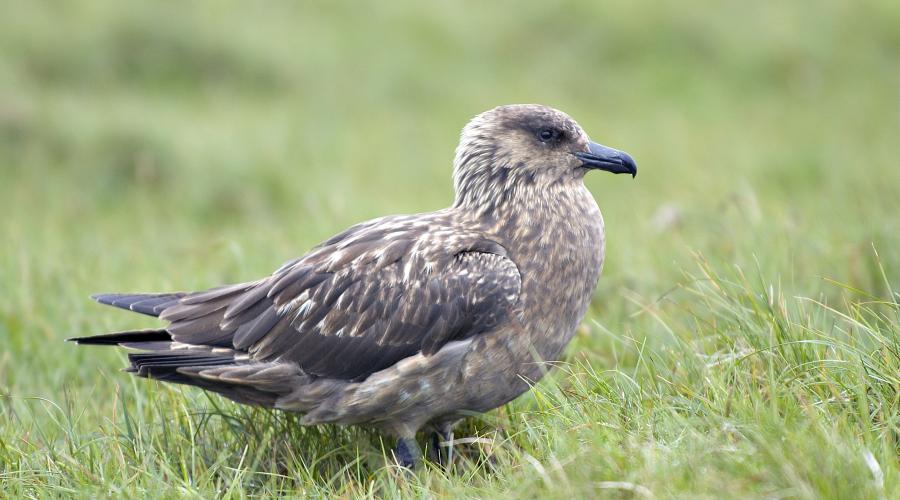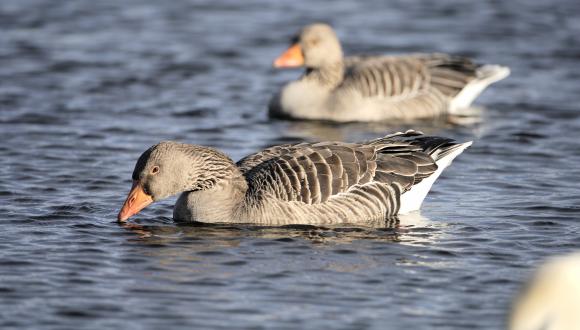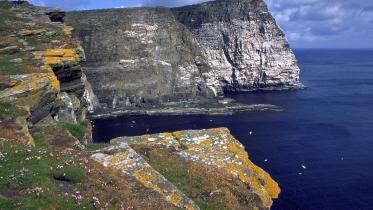
Some seabirds returning in lower numbers after avian flu outbreak
16 June 2023
Some seabird species have returned to Scotland in lower numbers this breeding season following the devastating outbreak of avian flu last year, according to early monitoring by NatureScot and its partners.
Despite recent concerning outbreaks of the virus in England, there is cautious optimism that colonies in Scotland have so far avoided the high number of deaths observed last summer.
However, early surveillance of seabird colonies suggest that some species have returned in significantly lower numbers than in previous years, with great skuas being especially hard hit.
While counts are ongoing, initial observations from some of the main sites in Shetland suggest significant breeding population declines for great skua – for example, it is estimated that up to 90% of the population on Hermaness may have been lost. Scotland supports 60% of the world breeding population of great skua.
As a result, a temporary suspension of ringing and research activities has been put in place for great skua to minimise unnecessary disturbance or stress to these vulnerable populations.
Counts and productivity monitoring will continue as these activities will aid understanding of the impacts of the outbreak, and can be carried out with minimal disturbance.
There are also concerns about unusual behaviour in terns, with fewer birds than usual returning to sites across Scotland, including NatureScot’s Isle of May and Noss National Nature Reserves (NNRs), and their return coming later than expected.
On Noss, tern nesting was late but some eggs have now at last been laid. But on the Isle of May, as yet there has been no nesting this year, while on Rum the terns have deserted without laying any eggs.
Targeted surveys of breeding seabird populations are currently underway, and will help to better understand the extent of the impact.
Alastair MacGugan, a NatureScot Wildlife Manager, said: “It is too soon to draw firm conclusions about the impact of last year’s terrible losses, but the low numbers of great skua and terns returning to our shores is certainly concerning and something we are keeping a very close watch on.
“The good news is that, in Scotland at least, we are not seeing the large numbers of dead birds around breeding sites that we did last year. This may mean that the remaining birds have gained some level of immunity to the virus. If so, then there is cause for optimism as populations may begin to slowly replace the losses that occurred last year.
“This is far from the end of the outbreak, however, and we are certainly not complacent. We may see the virus switch to other species in the future, as has happened with the gulls elsewhere in the UK.
“NatureScot and our partners in Scotland’s Avian Flu Task Force are continuing to work hard to understand this virus and take action to make our wild bird populations more resilient.”
So far this breeding season, the virus has largely impacted further south, devastating breeding colonies of black-headed gulls and terns, with thousands of adults and chicks dying at colonies across England, Wales and Northern Ireland.
It is unclear why this outbreak in gulls does not appear to be affecting colonies in Scotland. NatureScot has set up a monitoring programme to keep watch over Scotland’s gull breeding colonies for signs of the disease.
Members of the public can help wild birds by observing any biosecurity precautions in place on nature reserves, such as disinfecting boots on arrival and departure, and by continuing to report any dead or sick birds they see through the GB Wild Bird Surveillance Scheme. Where the species of bird is known, reports can ALSO be submitted to BirdTrack (BirdTrack.net). While the risk to the public is very low, dead or sick wild birds should not be handled and pets should be kept away from dead birds at all times.




